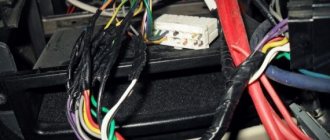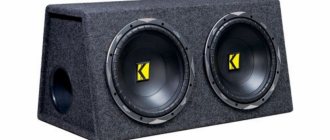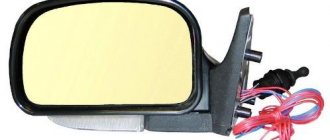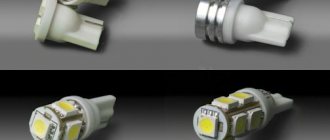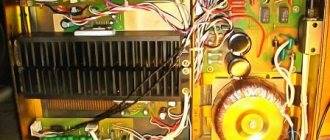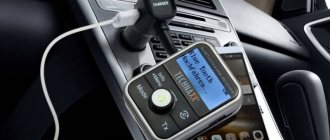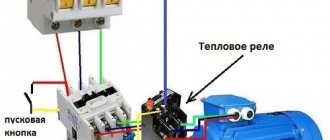TV is a widespread equipment and is present in almost every home. In many homes there may even be several of them in each room - from the living room to the kitchen and bedroom. Thanks to technological progress, analogue TVs have become almost a rarity, giving way to LCD TVs with flat LCD screens or plasma. Therefore, the miniaturization of electronics has made car TV very popular among vehicle owners.
Car TV Before choosing a car TV, study all the features and advantages of this technology. After all, this is not only a receiver on the roof and a device that can be connected to any old device. There are actually many different options that you can choose from.
Characteristics of car TVs
In order to figure out which car TV is better, you need to know the main functions and parameters that it should have.
- The first main condition is a supply voltage of 12 V so that it can operate on battery power.
- Modern car TVs must be equipped with an LCD matrix with LED backlighting, which affects their low power consumption.
- The third aspect to pay attention to is the installation of a digital tuner.
The video talks about portable car TVs:
Recommendations for selection
- Purchasing a device in specialized stores allows you to request quality certificates and receive warranty service.
- Time-tested manufacturers are distinguished by high-quality products.
- Having an adjustable monitor brightness and contrast level means safe driving on the roads, since the driver will not be distracted by bright light.
- Before purchasing a device, you should inspect the monitor for cracks, dead pixels and other defects.
Watch a video review of digital TV
Path of least resistance
In order to watch mobile TV on the go, you will need some basic components:
- display;
- tuner;
- antenna or satellite receiver.
If you already have a mobile video system in your car, then you'll need to install a display and check that your existing screen has multiple inputs.
If these are not available, you will need to purchase a distributor for the external or input selector. In addition to watching videos, today you can buy a car TV with a navigator. Such equipment provides convenient viewing of navigation instructions and cartography. Models and capabilities vary by manufacturer. For example, a car TV with a navigator from Explay contains pre-installed TV programs, a telescopic antenna and the ability to support up to 3 navigation programs.
Types of car monitors
Ceiling-mounted car TV
There are several types of monitors for installation in a car. We list the most common places:
- seat headrests, armrests;
- ceiling;
- console dashboard, sun visors.
To answer the question of which car TV is better, it’s worth looking at their variety and purpose. The choice of display varies depending on the user's needs, budget and potential target audience.
Console dashboard
Car TV on the dashboard
A centrally mounted flip-up monitor allows rear passengers to watch the screen at the same time. A ceiling-mounted car TV can be installed in the center of the car.
A drop-down monitor is suitable for large cars with a spacious interior, as well as a large potential audience. Ceiling car TVs are sold in the range from 15 to 17 inches diagonally, which makes it convenient for viewing. This type of equipment is budget-friendly.
One point to consider is that when deployed, these monitors may block the rearview mirror, so are not suitable for all vehicles.
Sunshield
Car TV on the sun visor
These monitors provide visual inspection to those sitting in the front seats. They can be installed on both sides of the visors, however it is important to note that drivers should not use them when the car is in motion.
These monitors are very similar to headrest monitors with the main difference being that they are installed for front seat passengers. Car TVs on the visor are the only possible option for a standard truck cab.
Seat headrests
Car TV for installation on the car armrest
Headrest monitors are great for small cars. Because they are built directly into the front seat headrests, the displays do not block the driver's line of sight from any of the mirrors. They will also address the issue of different passenger preferences. In fact, one passenger can watch a movie while the other plays games. These monitors also provide a good viewing angle.
Monitors are limited in size, with around 11 inches being the largest available, although most reach just 7 inches diagonally.
Connection and setup instructions
You can place a car TV in almost any part of the car: on the dashboard, dashboard, ceiling, built into the headrest or sun visor. To connect you may need: permanent marker, flathead and Phillips screwdrivers, knife, polystyrene foam, plywood, insulating tape, glue.
Important! Before proceeding with installation, you need to disconnect the negative terminal on the battery.
Connecting and setting up a TV tuner
Having decided on the installation location, perform the following steps:
- the tuner is installed in a place where it will not interfere and attract undue attention;
- a route of wires is laid connecting the device and the protection unit;
- connect the power wire to the auxiliary button in the fuse box;
- the infrared indicator from the remote control is fixed in a convenient place;
- connect the antenna and video output of the tuner;
- An antenna is attached to the windshield;
- battery is connected.
Headrest mounting
The purchased car TV must be sized to fit the intended niche in the headrest. To install, perform the following steps:
- Having removed the upholstery, use a sharp knife to cut a blind hole pre-defined in size;
- glue the device to the resulting hole;
- make a hole for the cable and stretch it;
- put the headrest cover back on;
- cut a hole on the surface of the fabric to the size of the screen;
- place the device in the niche resulting from the manipulations;
- Connect the wires to the tuner, power to the cigarette lighter.
Ceiling mounting
Before installing your car TV, you need to make sure that there is a built-in metal sheet under the headliner. When it is detected, the following actions are performed:
- expand the ceiling covering;
- insert a plywood sheet into the hole and glue it to the sheathing;
- following the instructions, install the TV;
- if the power is not from the cigarette lighter, then the wire to the engine compartment is routed through the opening along the door;
- The red wire is connected to the starter connector, the black wire is grounded, and the yellow wire is connected to a 12 volt source.
Tuners
Car TV tuners allow you to receive broadcast TV in your car.
So now you can enjoy your favorite programs while on the move. With a car tuner, you can watch all the major TV networks by simply connecting the TV tuner to your current mobile video system. To improve the quality of the transmitted signal, we recommend replacing the old analog tuner with a digital one. A car TV with a digital tuner will allow you to get more from over-the-air broadcasts. In Russia, you will need a tuner that allows you to receive a digital signal in the DVB standard. Video review of car TV tuner:
Characteristics of car TVs
Before buying a car TV in Eldorado or any other large household appliance store, you need to clarify the important parameters of portable devices, namely:
Screen Format
Depending on the purpose, the screen format will also change. For example, television shows are broadcast in a 4:3 aspect ratio, while DVD movies and digital channels are broadcast in 16:9 (widescreen). Therefore, if you choose a 16:9 model, you will have to stretch the screen a little to watch your favorite talk shows. Or you can take a more modern wide-format model, since, judging by rumors, our television will soon also go “on a wide scale”.
Permission
Screen resolution directly affects picture quality. However, it is worth considering that for small screens it can be smaller without losing clarity. The main models on the market are with resolutions of 480:234, 720:576, 800:400 and 1920:234. The higher these numbers are, the better the image you will get. If you do not plan to watch TV all the time, but only on rare long trips, then you can choose a lower resolution, so you can save money.
Screen diagonal
Car TVs are produced with different diagonals and here it is better to focus on the type of car you have. For example, for a passenger car it is better to purchase a device with a screen from 7 to 17 inches. Larger models are suitable for minibuses and minivans. And for motorhomes and large buses, you can choose models from 20 to 40 inches.
Viewing angle
The optimal viewing angle is considered to be 180 degrees, which will allow you to watch TV from any place relative to the axis of the screen. The option to rotate the image 180 degrees will also be useful.
Color and sound
In the general video signal, color transmission is carried out using a coded method. Today there are several such standards: PAL, SECAM, NTSC 3.58 and NTSC 4.43. SECAM is used for Russian television, so there is no need to overpay for extra encoding. But if you travel a lot, then it is better if the TV broadcasts in all standards.
Sound, as well as color, is encoded in the main signal according to certain standards: DK, I, BG. Domestic television uses SECAM DK, but it is better to choose a TV that accepts all encodings, so you will not have problems integrating various gadgets.
Tuner
How well TV programs will be received depends on the tuner, or more precisely on its sensitivity. It is best to buy a car TV with a digital tuner that will allow you to receive a signal in DVB T2 format. The fact is that television has already partially switched to digital, and analogue channels are gradually becoming a thing of the past. A TV tuner or receiver can be purchased separately, but it is better if it is built-in.
Antenna
All car “boxes” are equipped with built-in antennas that allow you to receive a television broadcast signal in the coverage area of a repeater or tower. Usually in the city, near populated areas, the signal is quite strong, but as soon as you move a little further, the signal will become less “confident”, so it is better to purchase an external antenna in advance.
An external antenna for a car TV can be:
- An external stationary pin, which will be mounted inside the passenger compartment on the front or rear window.
- Pin electromechanical. These types of devices are mounted on the rear fender of the car and pulled out if necessary.
- Active. Such antennas are equipped with an amplifier.
- Passive.
- Internal mesh, which is attached to the standard rear window defroster.
You should not have high hopes that the antenna and amplifier will provide a high-quality signal. The priority in this matter is the ability of the TV to receive a television broadcast signal. And, of course, it’s worth paying attention to the fact that TVs can even transmit a picture with obvious interference.
Antenna
There are a couple of receiver options.
The cheapest one is used in the tuner assembly, that is, internal, which is an easy way to get a wireless TV on the go. However, an external antenna is generally capable of receiving weaker signals. If you're traveling in an area that isn't too close to any broadcast antennas, a good, omnidirectional outdoor antenna is a must. The second option is an external receiver. Costs a little more, but it can reach signals further away from the source. So if you travel far beyond broadcast antennas, you'll need a satellite receiver. Such equipment is produced quite compactly; it can be placed on the roof of a car, where the signal can be easily captured. However, one of its disadvantages is, of course, the high price.
Video review of the configuration and main functions of a car TV:
How to transport a TV in a car
The larger the size of household appliances, the greater the likelihood of damage to them during transportation. How to transport a TV in a car if it is large?
So, if you need to transport a large LCD TV, you should not skimp on professional movers and transport and try to push it into the passenger car. Before transportation, pack the equipment in the original box (as it was originally), and if it is not there, you need to create multi-layer protection for the device, which consists of the following materials:
- Styrofoam;
- bubble wrap;
- cardboard, etc.
You can transport the TV without a box, but only if you pack it securely using the materials listed. It is better not to lift large models yourself, because their screen is more vulnerable. Under no circumstances should you put pressure on the screen and the frame around it. The equipment in the car must be installed vertically, and if this is not possible, then place it with the screen facing up. The main thing is not to lie down with the matrix.
The equipment must be placed so that its panels (front and rear) are across the direction of movement.
LCD TVs are vulnerable to vibration and shock, so be sure to secure them. The speed when transporting such cargo should not be too high, because sudden braking may damage the equipment.
This is why maintaining optimal speed is so important. If transporting a LCD TV is carried out in cold weather, then the car must be well heated, because such equipment is sensitive to both low temperatures and sudden changes.
Manufacturers
Mystery car TVs are in demand due to their reliability and attractive appearance.
The Korean company RS produces well-tested and proven products that have every chance of convincing you of trouble-free and durable equipment.
Gazer multimedia systems are popular among customers due to their high quality products.
Chinese manufacturer Klyde specializes in producing a wide range of modern car TVs.
The answer to the question of which car TV to choose is quite complex. Manufacturers offer equipment with various modifications and a range of functions. It all depends on the buyer, his financial capabilities and preferences.
